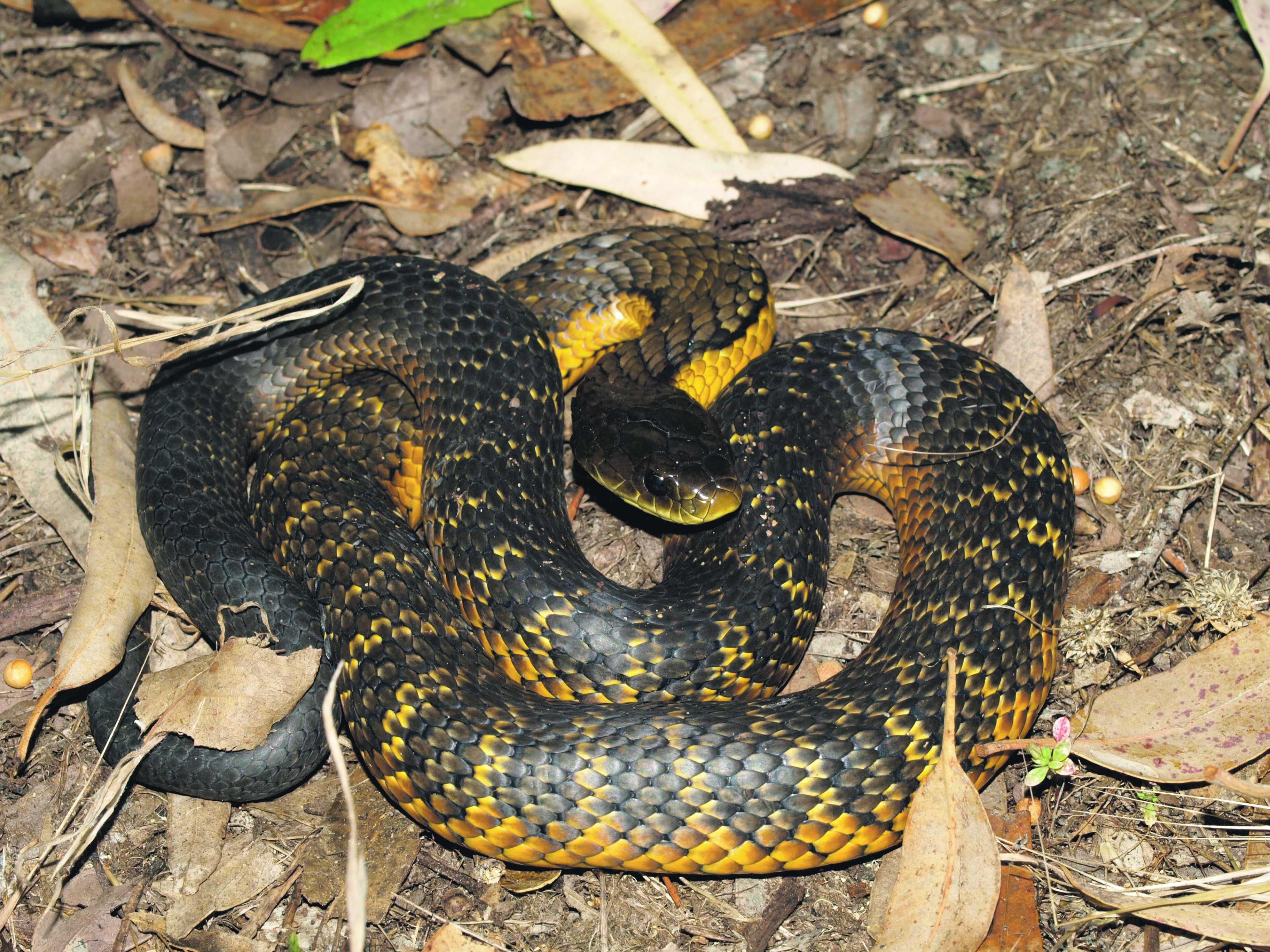In spring and summer, many reptiles emerge to bask in the sun. During this time you should take precautions to minimise the chance of encountering snakes. Remember, snakes are an integral part of the natural environment and play an important role in wildlife ecosystems.
Precautions
- Take care in bushland and grassy areas.
- Walk and/or cycle in cleared areas only, where you can see the ground.
- When bushwalking, wear long trousers and boots or other enclosed footwear that cover the ankles.
- Keep a watchful eye on the ground about a metre ahead of where you are walking, and avoid entering areas of long grass, rushes and undergrowth.
- Around your home remove long grass and items lying on the ground such as corrugated iron, which may provide cover for snakes. Move your winter wood piles and any garden debris from around the house.
- Reduce mice numbers around the house.
- Learn the correct treatment for snakebite.
If you find a snake in your garden or a house and believe it needs to be relocated contact your local Shire, or the Wildcare Helpline (08) 9474 9055 to be referred to a volunteer reptile remover.
SNAKE BITE TREATMENT
All known or suspected snake bites must be treated as potentially life-threatening, and medical aid should be sought urgently
WARNING
Do not wash venom off the skin or clothes because it may assist identification.
SIGNS AND SYMPTOMS
Signs of a snake bite are not always visible and, in some cases, the patient may not have felt anything. Symptoms may not appear for an hour or
more after the person has been bitten. Depending on the type of snake, signs and symptoms may include some or all of the following:
• immediate or delayed pain at the bite site
• swelling, bruising or local bleeding
• bite marks (usually on a limb) that may vary from obvious puncture wounds to scratches that may be almost invisible
• swollen and tender glands in the groin or armpit of the bitten limb
• faintness, dizziness
• nausea and vomiting
• headache
• abdominal pain
• oozing of blood from the bite site or gums
• double or blurred vision
• drooping eyelids
• difficulty in speaking or swallowing
• limb weakness or paralysis
• difficulty in breathing
• occasionally, initial collapse or confusion followed by partial or complete recovery.
1. Follow DRSABCD.
2. Call triple zero (000) for an ambulance.
3. Lie the patient down and ask them to keep still.
4. Reassure the patient.
5. Apply a pressure bandage as soon as possible:
• if on a limb, apply a broad pressure bandage (crepe preferred) over the bite site (90% of snake bites occur on a limb)
• apply a firm crepe or elasticised roller bandage (10–15 centimetres wide), starting just above the fingers or toes and moving upwards on the
bitten limb as far as can be reached. Use clothing or other material if a roller bandage is not available
• apply the bandage as tightly as possible to the limb.
6. Immobilise the bandaged limb using splints.
7. Keep the patient lying down and completely still.
8. Write down the time of the bite and when the bandage was applied. If possible, mark the location of the bite site (if known) on the skin with a pen, or photograph the site.
9. Stay with the patient until medical aid arrives.
Photo courtesy of Brian Bush, Snakes Harmful and Harmless








